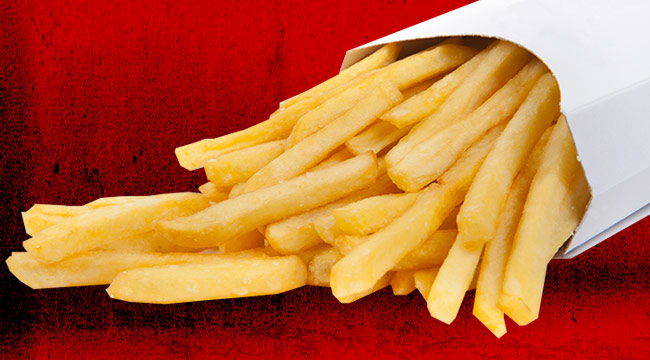
Everybody who’s graduated fourth grade knows the five-second rule, right? If you drop food, you have five seconds to scoop it back up before bacteria gets on it. Science has even cosigned the theory. Not so fast, though. A new study, and some problems with the old one, illustrate that you’d either better catch it before it drops or throw it in the trash (or not worry so damn much about germs).
The five-second rule has been a part of kitchen and lunchroom folklore as long as anybody can remember, and as such, it’s widely believed. In fact, contrary to gender stereotypes, a 2003 study found that a full 70 percent of women were willing to snatch something off the floor, edging the men by a full 14 percent. Jillian Clarke, the academic behind it, won an Ig Nobel for her work, and also touched off an ongoing scientific argument.
In 2006, a study found that salmonella was far more long-lived on substances like wood than expected, and that the wetter and broader the food, the more likely for significant contamination. And in 2014, a group of biology students found that while the previous research held, there might be some basis in the five-second rule. Tests that were rigorous, if not necessary academic, on the part of the Mythbusters further found that while minor bacterial contamination can happen immediately, a lot depends on geometry, moisture, duration on the floor, and location it was dropped in.
But the scientific community wouldn’t let the issues rest — and now scientists from Rutgers have declared that not only is the five-second rule false, but the safest surface to drop your food on isn’t one you’d want to eat off of at all.
The Rutgers team went all out, using a particularly nasty foodborne pathogen, Enterobacter aerogenes, and tested four common household surfaces: tile, carpet, wood, and stainless steel. They even used four different kinds of food, with watermelon, bread, buttered bread, and gummy bears all taking the drop.
The five-second rule proved inaccurate on all four surfaces with all four foods — although the longer it stayed on the surface, and the moister it was, the more bacteria gathered. Basically, anything wet is an immediate loss, while hard, dry foods, like gummy candy, might survive relatively uncontaminated. The worse news is that the surface least likely to gather bacteria on your food was carpet. We assume they didn’t measure how much carpet fuzz stuck to a given piece of food, but either way, eating food off a carpet is arguably more disgusting than any other scenario. Unless you like ingesting carpet fuzz, for some reason.
Obviously this needs to be tempered with a little bit of reality. People eat food quickly scooped off the floor all the time and don’t get sick, and it’s increasingly being shown that our anti-germ obsession is bad for us. As the old saying goes, you need to eat a pound of dirt before you die. That said, a little common sense and good judgement go a long way — if you really want to eat it, get at it fast.






